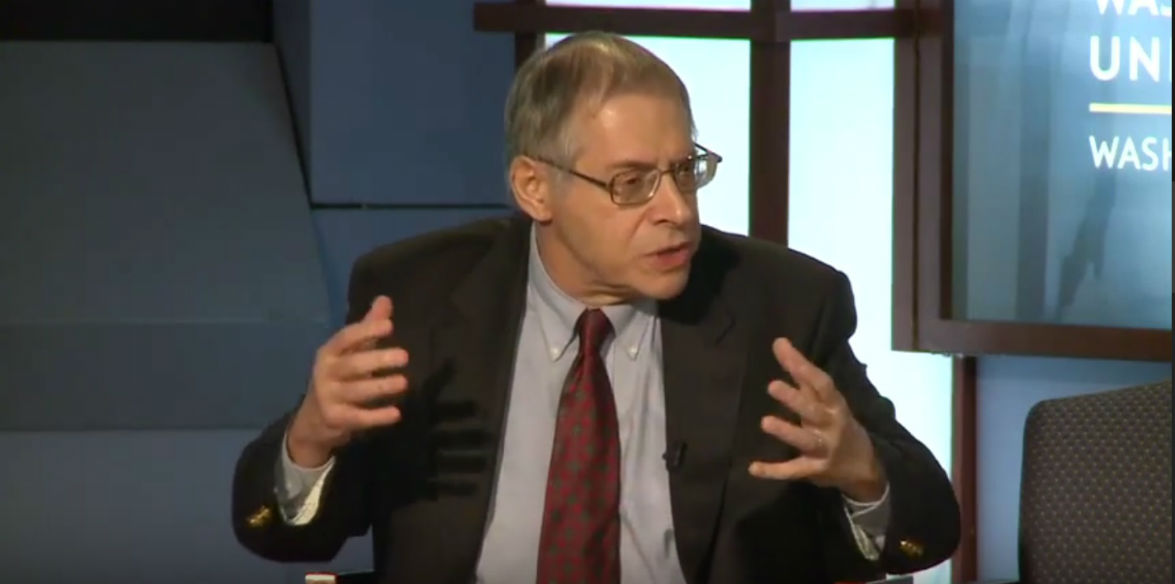Everyday you hear or read on some network or web site a claim that Social Security and Medicare are running out of money, followed by an appeal to raise taxes, or cut spending, or both to stop that from happening. But, why is it you almost never see or hear someone saying that the Defense Department is running out out of money, followed by a similar appeal to raise taxes or cut spending to pay for it?
The answer is obvious. It is that we expect to pay for defense spending, whatever its contribution to deficits every year with a new annual appropriation by Congress. There is little talk about running out of money for defense.
We just expect that Congress will appropriate what it believes is needed, and we understand that its defense appropriation mandates the Executive to spend the money appropriated. Why can’t we do the same thing with SS and Medicare?
The short answer is that we can, but we haven’t done that in the past. Instead, we’ve set up “Trust Funds,” which are actually accounting records of credits accumulated by the safety net programs viewed as US Treasury Securities.
The credits are equal to the amount of the “contributions” paid for by wage earners plus “bond interest income” accumulated annually, according to a rate specified by law, added to the “trust fund” balances. At the end of 2015, the accumulated “reserves” in the two SS trust funds totaled $2.8 trillion. Reserves in the two Medicare trust funds totaled $263 billion.
The SSA projects that the Old Age Survivors Insurance (OASI), and the Disability Insurance (DI) trust funds will, together, have enough credits to facilitate full benefit payments until 2034. It also projects that the Hospital Insurance (HI) fund will have enough credits to facilitate full benefit payments until 2028. The fourth fund, the Supplementary Medical Insurance (SMI) fund is projected to never run out credits because as SSA says:
Actuarial balance is not an informative concept for the SMI program because Federal law sets premium increases and general revenue transfers at the levels necessary to bring SMI into annual balance.
So, the basis for claims that SS and Medicare are in a fiscal crisis requiring immediate reform is that SSA actuarial projections say that OASI, DI, and HI trust funds will run out of credits to facilitate Treasury paying benefits in coming years. But there are no actuarial projections for the defense spending or for SMI (which doesn’t have a trust fund structure with accumulated surpluses from previous years), because both rely on annual appropriations of general revenues, and so are always “running out of money,” pending Congressional appropriations.
In this respect however, SMI is better off than Defense, since Federal law, barring repeal by Congress, requires that SMI be brought into annual balance with program projections, whereas Defense can occasionally undergo cuts as we saw recently during the sequester shenanigans. So, again, why is it that people say that OASI, DI, and HI are running out of money, while we never hear that cry of warning in the other two areas?
The answer is that current law says that Treasury has authority to pay full benefits for the parts of SS and Medicare associated with the first three trust funds only to the extent that the accumulated Treasury Securities in them equal or exceed the differences between current SS and Medicare collections. These parts of the safety net cannot draw on credits from general revenues to make up any differences, while defense and SMI-related spending draw on annual appropriations for the majority or all of their spending.
Put another way, Congress is constrained to “do something” annually if it wants to have defense and SMI spending; but in the cases of OASI, DI, and HI, it will, eventually, have to “do something” about annual appropriations for these programs, different from what it is doing now. And its failure to decide what it will do about that is the reason why there are various degrees of hysteria about SS and Medicare solvency, while no such hysteria exists with all manner of other Federal spending, including SMI-related and Defense spending.
So, as Stephanie Kelton says in a fine earlier post, to which this one owes much, the difference between SMI and the other three funds, in terms of supposed unsustainability, is not economic or financial, but is due to a choice of Congress to commit to payment of full SMI benefits indefinitely, while it hasn’t yet made that commitment for OASI, DI, and HI. In short, it is a political choice, only. And it has nothing to do with the US Government running out of money, unless Congress refuses to appropriate any coming shortfalls.
